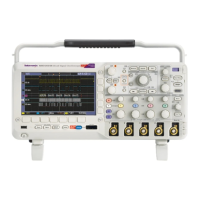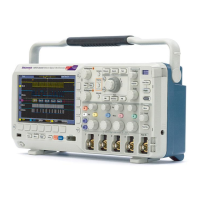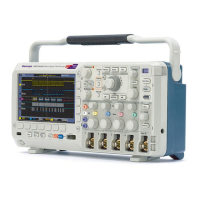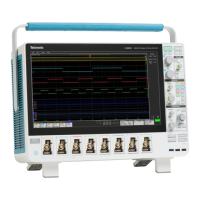Do you have a question about the Tektronix MSO2014 and is the answer not in the manual?
| Brand | Tektronix |
|---|---|
| Model | MSO2014 |
| Category | Test Equipment |
| Language | English |
Explains how to connect various types of probes, including TekVPI and TPA-BNC adapters.
Steps for safely connecting the power cord and turning on the oscilloscope, emphasizing grounding.
Guide on how to properly adjust passive voltage probes to match the oscilloscope input for accurate measurements.
Steps to configure analog channels for acquiring signals using front-panel buttons and knobs.
Explanation of how the Autoset function automatically configures the oscilloscope for a usable display.
Guide on modifying acquisition mode, setting record length, and adjusting delay time for signal capture.
Instructions for configuring the oscilloscope to decode and trigger on serial or parallel bus protocols.
Guide to selecting different trigger types, such as Edge, Pulse Width, Logic, and Bus triggers.
Instructions for setting up bus triggers for various serial and parallel communication protocols.
Configuring input parameters like coupling, bandwidth, probe settings, and offset for channels.
Procedure for performing automatic measurements of waveform parameters like frequency, period, and amplitude.
Lists and describes various automatic measurements available, categorized by time or amplitude.
Using on-screen cursors to take manual timing and amplitude measurements on waveforms.
Creating and using math waveforms by combining or transforming channel data for advanced analysis.
Utilizing Wave Inspector controls (zoom, pan, play/pause) for efficient analysis of long waveform records.











